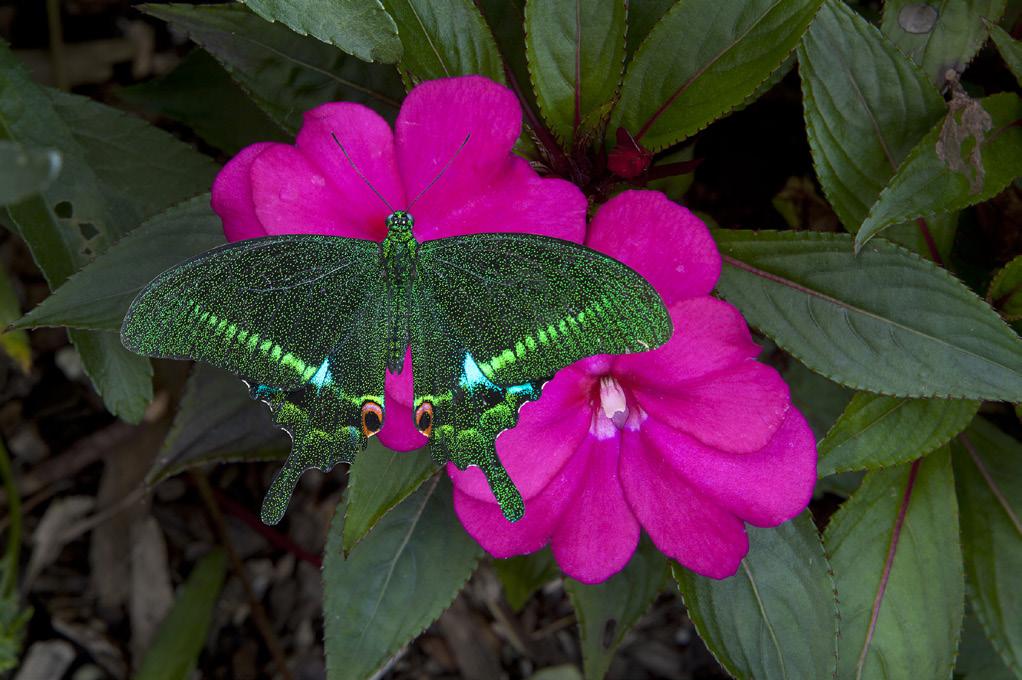
1 minute read
What’s wrong with this picture?
At first glance, there doesn’t seem to be anything wrong with this composite. It is a Paris peacock butterfly meticulously selected using the pen tool in Photoshop working at 400%, and then I combined it with the flower background photo. Notice, though, that the butterfly doesn’t have a shadow. Even in soft and diffused light, shadows are present, and even with subjects like butterflies with their ultra thin antenae, there is going to be a shadow, however subtle that shadow may be.
In the picture on the next page, you can see a faint shadow beneath the wings of the butterfly and even under the antennae. That made all the difference. Now there is dimension and depth even with such a flat subject. The butterfly looks connected to the flower as if it’s actaully resting on it.
Once the layer of the butterfly is created (in other words, the butterfly image is pasted onto the flowers), the fx submenu becomes available at the bottom of the layers palette. This is the gateway to creating drop shadows.

In the dialog box that opens, the small ‘angle’ graphic can be rotated. This determines the direction of the shadow. If the pointer is angled upward -- 0 degrees -- the shadow flows in the opposite direction, i.e. downward 180 degrees.
Once the direction is determined, the other three sliders that are relevant are Distance, Spread, and Size. Adjust these to your liking and to what looks natural. §








